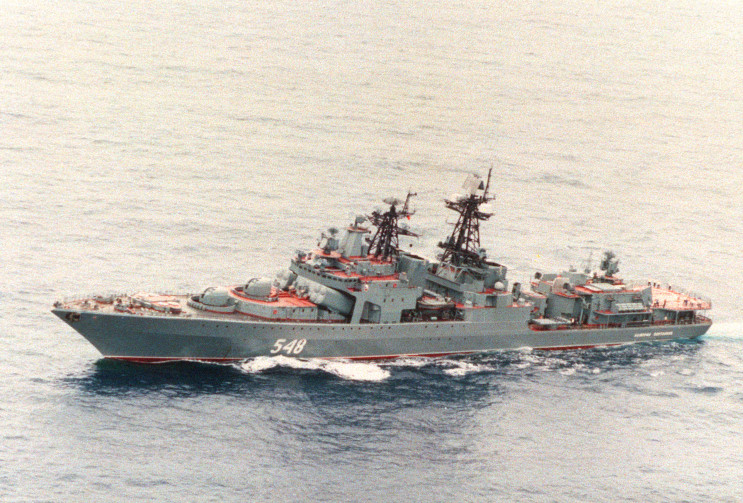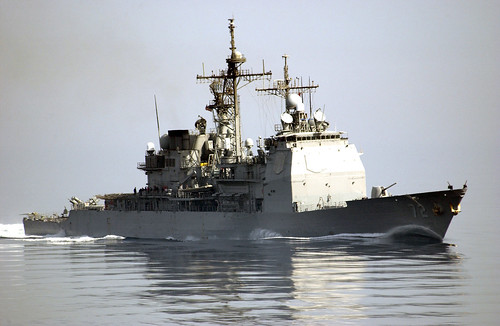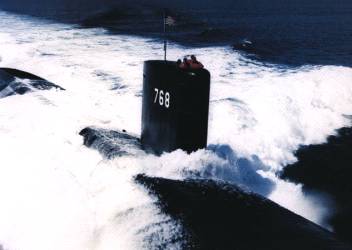Iris escribió:Estados Unidos proyecta la construcción del primer avión submarino
EE.UU - Las guerras modernas necesitan modernas armas. Y Estados Unidos aprovecha el arsenal que quedó aparcado tras la guerra fría. Ambas pretensiones han dado lugar a un proyecto, que desarrollará la empresa Lockheed Martin, llamado Cormorant. Se trata de un avión que viajará en los tubos de los misiles de los submarinos hasta que deba actuar. Entonces, un brazo artificial lo sacará a la superficie del agua, desde la que despegará para realizar su labor. Espionaje, ataques y transporte de armas o equipamiento de salvamento serán sus funciones. Las primeras pruebas de algunos de sus sistemas ya están siendo realizadas por el Departamento de Defensa nortemericano.
La empresa norteamericana Lockheed Martin, dedicada a la fabricación de motores de aviones, naves espaciales y sofisticados equipos electrónicos, planea un nuevo y revolucionario proyecto que quizá supere a todos los anteriores. Durante décadas, esta empresa ha sido pionera en la fabricación de aeronaves que han llevado a sus pilotos más alto, rápido y más sigilosamente que nadie.
El nuevo proyecto se llama Cormorant (en castellano, cormorán, que es un ave de mar de plumaje blanco), un avión que empezará y terminará sus misiones a más de 45 metros bajo el agua.
Se trata de un avión a reacción, autónomo e invisible a los radares, que estará dotado de armamento de corto alcance, o de equipos de observación y vigilancia. Será lanzado a través de los tubos lanzadores de los misiles Trident, desde alguno de los submarinos gigantes de la clase "Ohio", que en la actualidad son restos de la Guerra Fría.
Al no ser utilizados con este fin militar, el Cormorant los aprovechará los tubos de los misiles Trident para convertirse en una opción teledirigida de espionaje o de destrucción de objetivos cercanos a las costas. El Cormorant ha sido diseñado especialmente para ser lanzado desde los tubos de los misiles Trident.
Apenas ocupados ahora que la situación internacional ha cambiado, los lanzamisiles van a pasar a desempeñar nuevas funciones, con prototipos del tipo del nuevo Cormorán, que podría servir para transportar armas o equipamiento de salvamento a distancias de hasta 800 kilómetros mar adentro.
Fabricación complicada
La fabricación del Cormorant no será una tarea fácil: tendrá que caber en los tubos de los lanzamisiles, de algo más de dos metros de ancho. Además, deberá ser lo suficientemente fuerte como para aguantar la presión del agua a 45 metros de profundidad, y lo suficientemente ligero como para poder volar, informa la revista Popular Science.
Asimismo, los técnicos deberán arreglárselas para que no sea detectado en el momento de volver a su base acuática, puesto que las posiciones geográficas de los submarinos deben permanecer desconocidas para los enemigos.
El avión pesará cuatro toneladas y tendrá unas alas similares a las de las gaviotas. Estas alas se pegarán al resto de la estructura del aparato para poder entrar en los tubos de los misiles. La aeronave estará hecha de titanio, un material resistente a la corrosión, y todos sus espacios vacíos serán rellenados con espuma plástica, con el fin de que la nave aguante la presión. El resto de la estructura estará presurizada con gas inerte. Las puertas quedarán selladas con material inflable.
Motor a propulsión
El Cormorant no saldrá al exterior disparado como un misil, sino que una especie de brazo artificial lo guiará hacia el exterior, sacándolo a la superficie mientras el submarino se mantiene bajo el agua. Cuando sea sacado del agua, la carga impelente del cohete se pondrá en marcha, y el Cormorant comenzará a volar.
Una vez cumplida su misión, la aeronave regresará para amerizar en el agua, y el submarino enviará entonces un vehículo robótico subacuático para devolverlo a su sitio. La finalidad del envío de este robot sería evitar que la posición del submarino pudiese ser descubierta.
La Defense Advanced Research Projects Agency (DARPA) estadounidense hará, hasta septiembre de este año, algunas pruebas de los sistemas del Cormorant, como el del modelo de amerizaje o el del vehículo acuático de recogida de la aeronave. DARPA es el principal centro de investigación del Departamento de Defensa estadounidense.
Otros proyectos de la DARPA con los que se pretenden afrontar los nuevos retos bélicos del siglo XXI son un avión que vuele a nueve veces la velocidad del sonido, y otro que tenga alas que se mueven como las de los pájaros durante el vuelo, de manera que pueda pasar de una velocidad lenta con fines de espionaje, a una velocidad rápida en caso de que se quiera bombardear un objetivo.
.- Saludos.
Hola, vi en otro foro un video del cormoran y la verdad al menos por lo que se ve es espectacular, otra cosa es que se haga realidad.
el link del foro es: http://www.abovetopsecret.com/forum/thread275833/pg4
al final de la pagina esta el video, por cierto de youtube.
















.jpg/800px-USNS_Pathfinder_(T-AGS_60).jpg)







